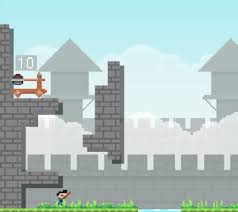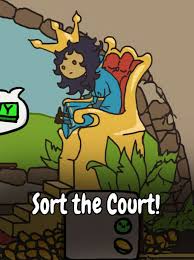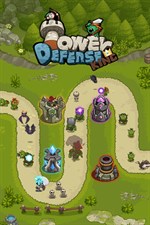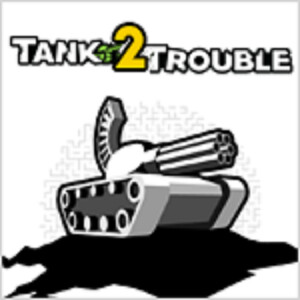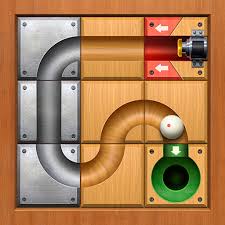In recent years, Slime Laboratory has captivated the imaginations of gamers and students alike. With its colorful visuals and challenging puzzles, this game offers more than just entertainment. It has found its place not only in the gaming world but also in educational settings. This blog post dives into the fascinating world of Slime Laboratory, exploring how it bridges the gap between gaming and learning.
Slime Laboratory Unblocked
Slime Laboratory is a unique game that stands out in the crowded world of online gaming. Its appeal lies in its simplicity and complexity—a combination that hooks players from the start. In this game, players control a tiny, green slime blob navigating through laboratory levels filled with puzzles and challenges.
The game’s premise is straightforward, but each level presents new obstacles that require strategic thinking and quick reflexes. This balance between simplicity and challenge makes Slime Laboratory an intriguing option for gamers who enjoy problem-solving.
Why Gamers Love Slime Laboratory
For gamers, Slime Laboratory offers a refreshing break from traditional action-packed titles. The game’s minimalist design and calming color palette provide a soothing experience. However, don’t be fooled by its appearance. Each level is thoughtfully designed to challenge even the most seasoned gamers.
Players appreciate the sense of accomplishment that comes from solving complex puzzles and overcoming tricky obstacles. The game encourages experimentation, allowing gamers to try different strategies without fear of failure. This trial-and-error approach is both engaging and rewarding, making Slime Laboratory a favorite among puzzle enthusiasts.
A New Learning Tool for Schools
Beyond the gaming realm, Slime Laboratory has found its way into classrooms as an innovative educational tool. Teachers are incorporating the game into lesson plans to help students develop critical thinking skills. The game’s puzzles encourage logical reasoning, problem-solving, and creativity—essential skills for academic success.
In the classroom, students work together to solve puzzles, fostering teamwork and collaboration. Teachers report that the game motivates students to participate actively, as it combines learning with fun. The interactive nature of Slime Laboratory keeps students engaged and eager to explore new challenges.
Gap Between Play and Education
Slime Laboratory exemplifies the growing trend of using video games as educational tools. The game’s ability to entertain and educate makes it a valuable resource in modern education. By integrating video games into the curriculum, teachers can meet students where they are—immersed in technology and digital media.
Playing Slime Laboratory enhances cognitive skills, such as spatial awareness and problem-solving, which are transferable to real-world scenarios. The game’s levels become increasingly complex, requiring students to apply learned strategies to succeed. This adaptability mirrors the learning process, making it a practical tool for teaching critical thinking.
Interactive learning is a powerful way to capture students’ attention, and Slime Laboratory does just that. The game’s captivating visuals and engaging gameplay create an immersive environment that fosters curiosity and exploration. Students are more likely to retain information when they’re actively involved in the learning process.
Teachers can use Slime Laboratory as a springboard for discussions on topics like physics, as the game involves elements of motion, gravity, and force. By applying these concepts within the game’s context, students gain a deeper understanding of the material. This hands-on approach helps students connect theoretical knowledge with real-world applications.
Problem Solving Skills
Problem-solving is a vital skill for success in both gaming and academics. Slime Laboratory offers a platform for students to practice and enhance this skill. The game’s levels present progressively challenging puzzles that require creative solutions. Players must analyze situations, weigh options, and make decisions to progress.
Through gameplay, students learn to approach problems from different angles and think critically about potential solutions. Slime Laboratory encourages perseverance, as players often need to try multiple strategies before finding the right one. This resilience is a valuable trait that extends beyond the virtual world.
Teamwork and Collaboration
In classroom settings, Slime Laboratory promotes teamwork and collaboration among students. Working together to solve puzzles fosters communication and cooperation, essential skills in today’s interconnected world. Students learn to delegate tasks, share ideas, and support each other through challenges.
Teachers can facilitate group play sessions, where students collaborate to overcome obstacles. This collaborative approach mirrors real-world scenarios, preparing students for future projects and team-based activities. The sense of community and shared achievement strengthens peer relationships, enhancing the overall learning experience.
Slime Laboratory encourages players to think outside the box and explore innovative solutions. The game’s design allows for multiple approaches to each puzzle, enabling students to experiment with different strategies. This freedom fosters creativity, as students learn to adapt and innovate.
By encouraging creative thinking, Slime Laboratory nurtures a growth mindset—an essential trait for success in today’s rapidly changing world. Students gain confidence in their ability to tackle challenges and view obstacles as opportunities for growth. This mindset empowers them to approach problems with curiosity and determination.
Slime Laboratory exemplifies the evolving role of technology in education. Video games, once seen primarily as entertainment, are now recognized as valuable learning tools. Technology enables educators to create dynamic, interactive learning experiences that resonate with digital-native students.
By integrating games like Slime Laboratory into the curriculum, educators can leverage technology to enhance student engagement and learning outcomes. This approach aligns with the shift towards personalized learning, where students take an active role in their education. Technology empowers students to learn at their own pace, explore new interests, and develop essential skills for the future.
The sense of accomplishment is a powerful motivator, and Slime Laboratory delivers this feeling in spades. Players experience a rewarding sense of achievement as they conquer challenging levels and solve intricate puzzles. This sense of success builds confidence and encourages students to tackle more complex challenges.
In the classroom, teachers can celebrate students’ achievements, reinforcing the value of perseverance and hard work. By recognizing milestones and progress, educators create a positive learning environment where students feel motivated to continue their learning journeys.
Slime Laboratory instills a love for learning that extends beyond the game itself. The skills and mindset developed through gameplay are transferrable to other areas of life, fostering a lifelong passion for discovery and growth. Students learn that learning can be enjoyable and rewarding, sparking curiosity and a desire to explore new topics.
Educators can harness this enthusiasm by encouraging students to apply their problem-solving skills to real-world challenges. By connecting game experiences to broader learning objectives, teachers can inspire students to pursue knowledge and innovation beyond the classroom.
Conclusion
Slime Laboratory is more than just a game—it’s a bridge between gaming and education. By engaging players in problem-solving, creativity, and collaboration, the game offers valuable lessons for students and gamers alike. Its ability to captivate and educate highlights the potential of video games as powerful learning tools.
Whether you’re a gamer seeking a new challenge or an educator looking to enhance student engagement, Slime Laboratory offers a unique opportunity to explore the intersection of play and learning. Embrace the power of games in education and inspire the next generation of thinkers and innovators



